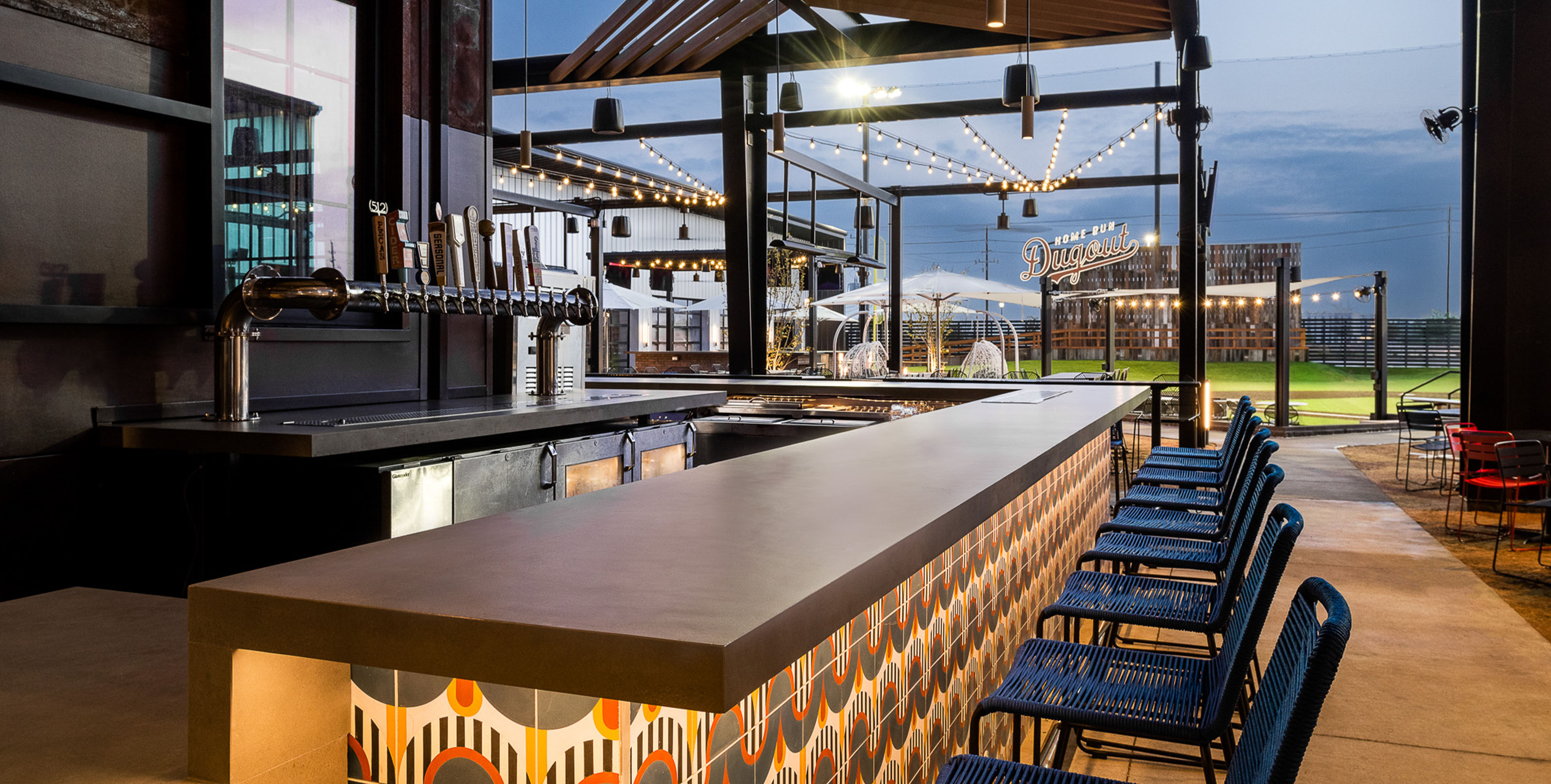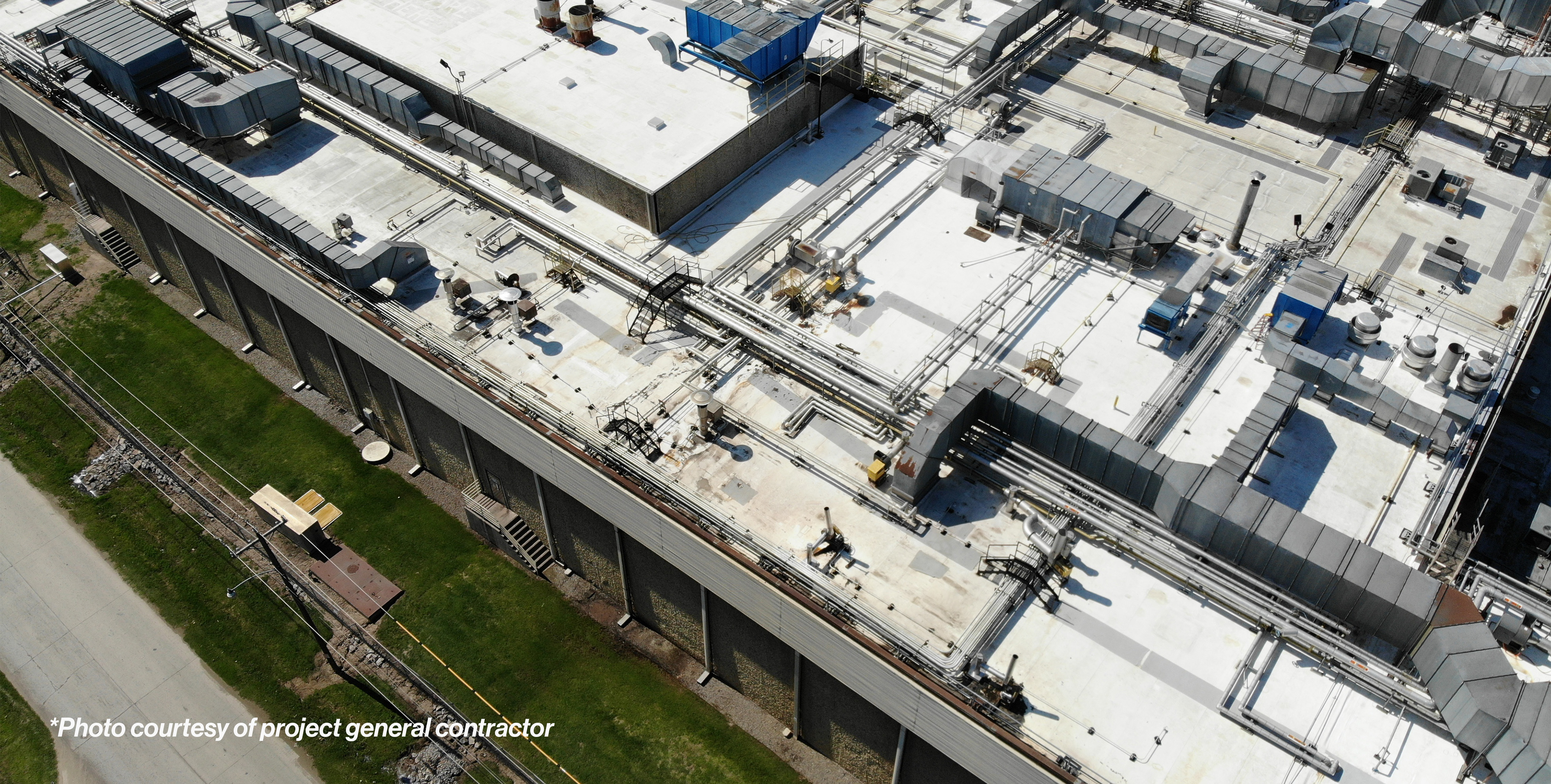The story of Home Run Dugout began with two lifelong baseball fans, Tyler Bambrick and Nick Hermandorfer, who played together on their company’s softball team. When games were rained out, they often found themselves at entertainment venues designed around golf, where guests could enjoy games, food, and drinks.
It sparked an idea: What if there was a baseball-themed destination with the same social, interactive atmosphere? They envisioned a place where everyone—from seasoned athletes to casual fans—could experience the thrill of hitting a home run. As Bambrick puts it, “We truly believe that hitting a home run is one of the greatest feelings in sports, and we wanted people to share that feeling in a fun, social setting.”
Designing a Grand Slam Experience
With their vision set, Bambrick and Hermandorfer began looking for a partner who could help bring this new concept to life. After interviewing five firms, HFA stood out from the crowd. “HFA immediately understood our goals,” Bambrick says. “They didn’t just see this as another entertainment facility—they saw it as a place where design would be the key to creating an inclusive and engaging experience.”
HFA’s Hospitality team specializes in transforming visionary ideas into physical spaces where patrons can feel at home. Their focus on user-centered design made them the perfect match for Home Run Dugout’s founders, who wanted to create a space for a wide range of visitors.
“We get to bring cool designs to life,” says Nicole Poole, Vice President at HFA and leader of the Hospitality + Entertainment team. “But it’s about more than just aesthetics—it’s about crafting spaces where people want to linger, engage, and come back.”

Turning Data into Design
From the outset, the HFA team worked closely with Home Run Dugout’s founders to understand not just their vision, but their audience, as well. What would these guests look for? How could the design help shape a memorable experience?
Through HFA’s Matchstick design development process, they gathered insights on user profiles—like baseball fans looking to test their swing, food lovers eager for a top-notch meal, and families searching for a unique hangout. This data helped guide the design of the space, ensuring it could cater to multiple demographics while maintaining a cohesive feel. “We didn’t just want to create one type of experience,” says Matt Tillman (AIA), Team Lead at HFA. “We wanted to design moments for all these different groups to find their place in the space.”
The result? A layout that balances a variety of uses without increasing square footage. There are spaces for casual visitors, corporate events, and even concerts. The centerpiece, of course, is the batting bays—featuring Home Run Dugout’s proprietary soft-toss pitching machines, perfect for players of all skill levels. The machines ensure that every visitor, whether they’re seasoned sluggers or trying out baseball for the first time, can step up to the plate with confidence.

Designing for Function and Flexibility
One of the most significant challenges for HFA was creating a space that could host such a diverse set of activities while remaining functional and flexible. To achieve this, they iterated on the layout five times, refining it to meet both the day-to-day needs of visitors and the potential for special events.
For instance, the facility needed to accommodate walk-in guests as easily as possible for large corporate parties or birthday celebrations. HFA also designed outdoor areas for concerts and added versatile seating and gathering spaces to support events of all sizes. The team started with the knowledge that any sports entertainment concept would likely need not just innovative technology to anchor their concept but a design befitting the patron groups that will likely congregate in their spaces, craving more intentional and genuine opportunities for connections.
“HFA understood that we weren’t just building a baseball venue,” Bambrick says. “We were building a place where people could come together for all kinds of experiences, and they nailed it.”
Early in the design process, the HFA team knew it was vitally important to create a space that could broaden the appeal by offering more than just a baseball venue, and instead, bringing a micro baseball stadium feel to Katy, Texas. By enhancing the social experience that makes Major League Baseball a beloved American pastime, we were able to create a destination that can flourish and grow for years to come, because it plays on the baseball aspect well, but also provides other opportunities for engaging and connection.

The Role of Design in Expansion
The partnership between HFA and Home Run Dugout didn’t end with the opening of the Katy, Texas, facility in March 2023. As the first location took off, drawing guests of all ages and expanding to add more batting bays and event spaces, the team at HFA played a crucial role in setting the Home Run Dugout team up for success, allowing them to plan for future growth.
“We’re already looking at new locations,” Bambrick shares. “The Katy facility is our first proof of concept, and HFA helped us create something that can be replicated and adapted for other cities in the future.”
Because of the overwhelming success of the Katy, TX location, the Home Run Dugout team has begun to iterate the design of the concept, adding more hitting bays, rearranging the programming on site to better flow for the use cases we’ve seen in the current location, serving as a prototype for further expansions in the future.
The lessons gleaned from our work with Home Run Dugout will only help inform our work with other sports entertainment concepts in the future. Our client partners are some of the best in the business, and combining expertise will only help to inform our work with other sports entertainment concepts in the future. At the end of the day, technology is important, but the social aspect and the environment those interactions take place in is what gives these concepts staying power. The lighting, textures, and aesthetics all act as ingredients alongside the Owner's vision and the technology, coming together to craft a successful and memorable design solution.



.jpg)



.png)
.jpg)

.jpg)



